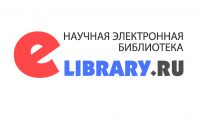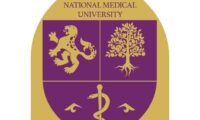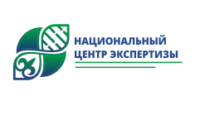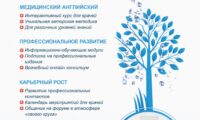Получена: 05/07/2023/ Принята:013/10/ 2023 / Опубликована online: 30/10/2023
УДК 615.22
DOI 10.53511/PHARMKAZ.2023.60.34.027
ЗАРИНА Т. ШУЛЬГАУ 1, АСЕЛЬ С. УРАЗБАЕВА 1, ШЫҢҒЫС Д. СЕРҒАЗЫ 1,
ЖАНЫБЕК Т. БОКЕБАЕВ 2, ЕРЛАН М. РАМАНКУЛОВ 1, АЛЕКСАНДР Е. ГУЛЯЕВ 1
1ТОО «Национальный центр биотехнологии», г. Астана, Казахстан
2НАО «Астана медицинский университет», г. Астана, Казахстан
ОБЗОР ВОЗМОЖНОСТЕЙ КОРРЕКЦИИ СИНДРОМА
ПОВЫШЕННОЙ ВЯЗКОСТИ КРОВИ
Резюме: Синдром повышенной вязкости в последнее время стал рассматриваться как осложнение
коронавирусной болезни (COVID-19). Возможным механизмом является повышение уровня фибриногена и иммуноглобулинов. Очевидно, что в этой области необходимы дополнительные исследования.
Цель: рассмотреть современное состояние проблем физики кровотока, изучения вязкости крови и
патофизиологии нарушений вязкости крови, а также предпринять попытку анализа состояния вязкости крови при некоторых патологических состояниях; рассмотреть перспективы терапевтической коррекции вязкости крови.
Стратегия поиска. При подготовке настоящего обзора в качестве поисковых словосочетаний использовали следующие: «вязкость крови, увеличение вязкости крови, синдром гипервязкости крови»
для поиска в русскоязычной литературе, а также использовали такие поисковые фразы при поиске литературы в базе «доказательной медицины» PubMed, как: «blood viscosity», «increased blood
viscosity» «hyperviscosity syndrome». Глубина литературного поиска составила 20 лет, однако авторы опирались в своем исследовании и на более ранние фундаментальные исследования, используемые в качестве первоисточников информации. В ходе литературного поиска авторами были отобраны 43 литературных источника.
Заключение: В последние пять лет, с появлением приборов для относительно точного измерения
параметров вязкости крови, феномен вязкости крови начинает становиться мишенью и экспериментальных и клинических исследований. Использование этого феномена в качестве объекта для
терапевтического воздействия уже началось и, уверены, сулит благотворные результаты.
Ключевые слова: вязкость крови, синдром гипервязкости крови, осложнение коронавирусной болезни, повышение уровня фибриногена.
СПИСОК ЛИТЕРАТУРЫ
1 Beris AN, Horner JS, Jariwala S, Armstrong MJ, Wagner NJ. Recent advances in blood rheology: a review. Soft Matter. 2021 Dec 8;17(47):10591-10613.
Gonzalo A, García-Villalba M, Rossini L, Durán E, Vigneault D, Martínez-Legazpi P, Flores O, Bermejo J, McVeigh E, Kahn AM, Del Alamo JC. Non-Newtonian
blood rheology impacts left atrial stasis in patient-specific simulations. Int J Numer Method Biomed Eng. 2022 Jun;38(6):e3597. doi: 10.1002/cnm.3597.
2 Kucukal E, Man Y, Hill A, Liu S, Bode A, An R, et al. Whole blood viscosity and red blood cell adhesion: potential biomarkers for targeted and curative therapies
in sickle cell disease. Am J Hematol. (2020) 95:1246–56.
3 Bekelman J, Jackson N, Donehower R. Oncologic Emergencies. 2nd ed. Philadelphia: Saunders Elsevier; (2006).
4 Alexis Perez Rogers; Molly Estes. Hyperviscosity Syndrome Last Update: March 13, 2023. https://www.ncbi.nlm.nih.gov/books/NBK518963/ Lowe GDO,
Harris K, Koenig W, Ben-Shlomo Y, Thorand B, Peters A, Meisinger C, Imhof A, Tunstall-Pedoe H, Peters SAE, Woodward M. Plasma viscosity, immunoglobulins
and risk of cardiovascular disease and mortality: new data and meta-analyses. J Clin Pathol. 2023 Feb 24:jclinpath-2022-208223. doi: 10.1136/jcp-2022-20822.
5 Al-Kuraishy HM, Al-Gareeb AI, El-Bouseary MM, Sonbol FI, Batiha GE. Hyperviscosity syndrome in COVID-19 and related vaccines: exploring of uncertainties.
Clin Exp Med. 2022 May 24:1–10. doi: 10.1007/s10238-022-00836-x.
6 Kim BJ, Lee YS, Zhbanov A, Yang S. A physiometer for simultaneous measurement of whole blood viscosity and its determinants: hematocrit and red blood
cell deformability. Analyst. (2019) 144:3144–57.
7 Al-kuraishy HM, Al-Gareeb AI, Albuhadilly AK. Vinpocetine and pyritinol: a new model for blood rheological modulation in cerebrovascular disorders—A
randomized controlled clinical study. BioMed Res Int. (2014) 2014:324307. 10.1155/2014/324307.
8 Pop GAM, Duncker DJ, Gardien M, Vranckx P, Versluis S, Hasan D, Slager CJ: The clinical significance of whole blood viscosity in (cardio)vascular medicine.
Neth Heart J. 2002, 10:512- 516.
9 Pop GAM, Duncker DJ, Gardien M, Vranckx P, Versluis S, Hasan D, Slager CJ: The clinical significance of whole blood viscosity in (cardio)vascular medicine.
Neth Heart J. 2002, 10:512- 516.
10 Sloop GD, Bialczek JK, Weidman JJ, St Cyr JA: Uric acid increases erythrocyte aggregation: implications for cardiovascular disease. Clin Hemorheol
Microcirc. 2016, 63:349-359. 10.3233/CH-152023.
11 Sloop GD: An introduction to hemodynamics and hemorheology . Blood Viscosity: Its Role in Cardiovascular Pathophysiology and Hematology. Sloop GD
(ed): Nova Science Publishers, New York; 2017. 1:17-34
12 Marenduzzo D, Finan K, Cook PR: The depletion attraction: an unappreciated force driving cellular organization. J Cell Biol. 2006, 175:681-686. 10.1083/
jcb.200609066.
13 Pop GAM, Duncker DJ, Gardien M, Vranckx P, Versluis S, Hasan D, Slager CJ: The clinical significance of whole blood viscosity in (cardio)vascular medicine.
Neth Heart J. 2002, 10:512- 516.
14 Starzyk D, Korbut R, Gryglewski RJ: Effects of nitric oxide and prostacyclin on deformability and aggregability of red blood cells of rats ex vivo and in vitro.
J Physiol Pharmacol. 1999, 50:629-637.
15 Dintenfass L: Hypothesis of regulation of blood viscosity through viscoreceptor mechanism. Hyperviscosity in Hypertension. Pergamon Press, Sydney;
1981. 1:93-113.
16 Reinhart WH: Molecular biology and self-regulatory mechanisms of blood viscosity: a review. Biorheology. 2001, 38:203-212.
17 Pop GAM, De Boer M-J, Stalenhoef AFH: Reducing cardiac after-load by lowering blood viscosity in patients with familial hypercholesterolemia – a pilot
study. Possible mechanism for occurrence of anemia in chronic heart failure patients? Cor et Vasa. 2016, 58:374-378. 10.1016/j.crvasa.2015.10.001.
18 Sloop GD: The systemic vascular resistance response. Blood Viscosity: Its Role in Cardiovascular Pathophysiology and Hematology. Sloop GD (ed): Nova
Science Publishers, New York; 2017. 1:67-82.
19 Singh A, Eckardt KU, Zimmerman A, et al.: Increased plasma viscosity as a reason for inappropriate erythropoietin formation. J Clin Invest. 1993, 91:251-
256. 10.1172/JCI116178.
20 2. Sloop GD: The systemic vascular resistance response. Blood Viscosity: Its Role in Cardiovascular Pathophysiology and Hematology. Sloop GD (ed):
Nova Science Publishers, New York; 2017. 1:67-82.
21 Sloop GD: The systemic vascular resistance response. Blood Viscosity: Its Role in Cardiovascular Pathophysiology and Hematology. Sloop GD (ed): Nova
Science Publishers, New York; 2017. 1:67-82.
22 Sloop GD: The systemic vascular resistance response. Blood Viscosity: Its Role in Cardiovascular Pathophysiology and Hematology. Sloop GD (ed): Nova
Science Publishers, New York; 2017. 1:67-82.
23 Kobayashi J, Ohtake K, Murata I, Sonoda K. Nitric oxide bioavailability for red blood cell deformability in the microcirculation: A review of recent progress.
Nitric Oxide. 2022 Dec 1;129:25-29.
24 Guyton A, Hall J. Textbook of Medical Physiology. 11th ed. Philadelphia, PA, WB Saunders Company. 2000, Chapters 14-17.
25 Kobayashi J, Ohtake K, Murata I, Sonoda K. Nitric oxide bioavailability for red blood cell deformability in the microcirculation: A review of recent progress.
Nitric Oxide. 2022 Dec 1;129:25-29.
26 Fracassi F, Vetrugno V, Mandurino-Mirizzi A, Cosentino N, Panicale S, Caprari P, Niccoli G, Crea F. Effect of hemorheological parameters on myocardial
injury after primary or elective percutaneous coronary intervention. Coron Artery Dis. 2018 Dec;29(8):638-646.
27 A. Gnasso et al Influence of acute reduction of blood viscosity on endothelial function Clinical Hemorheology and Microcirculation, 01 Jan 2019, 72(3):239-
245
28 Lowe GDO, Harris K, Koenig W, Ben-Shlomo Y, Thorand B, Peters A, Meisinger C, Imhof A, Tunstall-Pedoe H, Peters SAE, Woodward M. Plasma
viscosity, immunoglobulins and risk of cardiovascular disease and mortality: new data and meta-analyses. J Clin Pathol. 2023 Feb 24:jclinpath-2022-208223.
doi: 10.1136/jcp-2022-208223.
29 Sloop GD, Weidman JJ, St Cyr JA: Perspective: interesterified triglycerides, the recent increase in deaths from heart disease, and elevated blood viscosity.
Ther Adv Cardiovasc Dis. 2018, 12:23-28. 10.1177/1753944717745507 Sloop GD, Weidman JJ, St Cyr JA: Perspective: the failure of cholesteryl ester transfer
protein inhibitors: is it due to increased blood viscosity?. Ther Adv Cardiovasc Dis. 2015, 9:32-35. 10.1177/1753944714566427
30 Chiva-Blanch G, Badimon L. Effects of Polyphenol Intake on Metabolic Syndrome: Current Evidences from Human Trials. Oxid Med Cell Longev 2017;
2017:5812401 10.1155/2017/5812401
31 Malinska H, Hüttl M, Oliyarnyk O, Markova I, Poruba M, Racova Z, Kazdova L, Vecera R. Beneficial effects of troxerutin on metabolic disorders in nonobese model of metabolic syndrome. PLoS One. 2019 Aug 12;14(8):e0220377. doi: 10.1371/journal.pone.0220377
32 Chattopadhyay I., Biswas K., Bandyopadhyay U., Banerjee R.K. Turmeric and curcumin: Biological actions and medicinal applications. Curr. Sci. 2004:44–
53.
33 Hasanzadeh S., Read M.I., Bland A.R., Majeed M., Jamialahmadi T., Sahebkar A. Curcumin: An inflammasome silencer. Pharmacol. Res. 2020;159:104921.
doi: 10.1016/j.phrs.2020.104921
34 Fahed G, Aoun L, Bou Zerdan M, Allam S, Bou Zerdan M, Bouferraa Y, Assi HI. Metabolic Syndrome: Updates on Pathophysiology and Management in
2021. Int J Mol Sci. 2022 Jan 12;23(2):786. doi: 10.3390/ijms23020786.
35 Alidadi M., Sahebkar A., Eslami S., Vakilian F., Jarahi L., Alinezhad-Namaghi M., Arabi S.M., Vakili S., Tohidinezhad F., Nikooiyan Y., et al. The Effect of
Curcumin Supplementation on Pulse Wave Velocity in Patients with Metabolic Syndrome: A Randomized, Double-Blind, Placebo-Controlled Trial. Adv. Exp.
Med. Biol. 2021;1308:1–11.
36 Fleenor B.S., Sindler A.L., Marvi N.K., Howell K.L., Zigler M.L., Yoshizawa M., Seals D.R. Curcumin ameliorates arterial dysfunction and oxidative stress
with aging. Exp. Gerontol. 2013;48:269–276.
37 Radosinska J, Vrbjar N. Erythrocyte Deformability and Na,K-ATPase Activity in Various Pathophysiological Situations and Their Protection by Selected
Nutritional Antioxidants in Humans. Int J Mol Sci. 2021 Nov 3;22(21):11924. doi: 10.3390/ijms222111924. Bijak M, Sut A, Kosiorek A, Saluk-Bijak J, Golanski J. Dual Anticoagulant/Antiplatelet Activity of Polyphenolic Grape Seeds Extract. Nutrients. 2019 Jan 5;11(1):93. doi: 10.3390/nu11010093. Xie Q, Li H, Lu D,
Yuan J, Ma R, Li J, Ren M, Li Y, Chen H, Wang J, Gong D. Neuroprotective Effect for Cerebral Ischemia by Natural Products: A Review. Front Pharmacol.
2021 Apr 22;12:607412. doi: 10.3389/fphar.2021.607412.
38 Dettelbach H.R., Aviado D.M. Clinical pharmacology of pentoxifylline with special reference to its hemorrheologic effect for the treatment of intermittent
claudication. J. Clin. Pharmacol. 1985;25:8–26.
39 Hendry BM, Stafford N, Arnold AD, Sangwaiya A, Manglam V, Rosen SD, Arnold J. Hypothesis: Pentoxifylline is a potential cytokine modulator therapeutic
in COVID-19 patients. Pharmacol Res Perspect. 2020 Aug;8(4):e00631. doi: 10.1002/prp2.631.
40 González-Pacheco H, Amezcua-Guerra LM, Sandoval J, Arias-Mendoza A. Potential usefulness of pentoxifylline, a non-specific phosphodiesterase
inhibitor with anti-inflammatory, anti-thrombotic, antioxidant, and anti-fibrogenic properties, in the treatment of SARS-CoV-2. Eur Rev Med Pharmacol Sci.
2020 Jul;24(13):7494-7496.
41 Donate-Correa J, Tagua VG, Ferri C, Martín-Núñez E, Hernández-Carballo C, Ureña-Torres P, Ruiz-Ortega M, Ortiz A, Mora-Fernández C, NavarroGonzález JF. Pentoxifylline for Renal Protection in Diabetic Kidney Disease. A Model of Old Drugs for New Horizons. J Clin Med. 2019 Feb 27;8(3):287. doi:
10.3390/jcm8030287. Donate-Correa J, Sanchez-Niño MD, González-Luis A, Ferri C, Martín-Olivera A, Martín-Núñez E, Fernandez-Fernandez B, Tagua
VG, Mora-Fernández C, Ortiz A, Navarro-González JF. Repurposing drugs for highly prevalent diseases: pentoxifylline, an old drug and a new opportunity for
diabetic kidney disease. Clin Kidney J. 2022 May 19;15(12):2200-2213.
42 Sloop G D, De Mast Q, Pop G, et al. (February 24, 2020) The Role of Blood Viscosity in Infectious Diseases. Cureus 12(2): e7090. DOI 10.7759/
cureus.7090.
43 Pop GAM, De Boer M-J, Stalenhoef AFH: Reducing cardiac after-load by lowering blood viscosity in patients with familial hypercholesterolemia – a pilot
study. Possible mechanism for occurrence of anemia in chronic heart failure patients? Cor et Vasa. 2016, 58:374-378. 10.1016/j.crvasa.2015.10.001 Sloop
GD: The systemic vascular resistance response. Blood Viscosity: Its Role in Cardiovascular Pathophysiology and Hematology. Sloop GD (ed): Nova Science
Publishers, New York; 2017. 1:67-82. Sloop GD, Pop GAM, Weidman JJ, St Cyr JA: Why atherothrombosis is in principle a hematologic disease: the effect of
disorders and drugs which affect thrombosis on the development of atherosclerotic plaques. Int Arch Cardiovasc Dis. 2018, 2:10.23937/iacvd2017/1710012
Harris KM, Arya R, Elias A, Weber T, Green DA, Greaves DK, Petersen LG, Roberts L, Kamine TH, Mazzolai L, Bergauer A, Kim DS, Olde Engberink RH, Zu
Eulenberg P, Grassi B, Zuccarelli L, Baldassarre G, Tabury K, Baatout S, Jordan J, Blaber AP, Choukér A, Russomano T, Goswami N. Pathophysiology, risk,
diagnosis, and management of venous thrombosis in space: where are we now? NPJ Microgravity. 2023 Feb 16;9(1):17. doi:10.1038/s41526-023-00260-9.


































